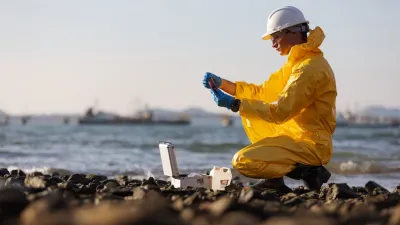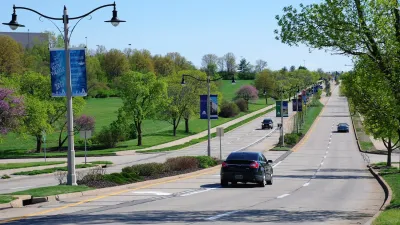With the U.S. government urging a 50-mile evacuation zone around the Fukushima plant, Karl Grossman contemplates what a comparable emergency would mean for the Indian Point nuclear plant in New York state.
Grossman, author of Cover-up: What You are not Supposed to Know About Nuclear Power, points out that the disaster in Japan shows that the current 10-mile evacuation zone recommendation from the Nuclear Regulatory Commission is inadequate; but that to apply the government's own 50-mile radius to Indian Point would take in some 20 million people, which
"would cover all of Manhattan and much of the rest of New York City and Long Island, as well as large portions of Connecticut and New Jersey...The situation involving a disastrous accident at Indian Point would be particularly intense if the winds were blowing from the north which they commonly do down the Hudson River Valley enveloping Manhattan in radioactivity. If electricity stopped flowing, people would be trapped in elevators and in other ways many would be frozen in place as the radiation descended.
There would be complete gridlock as attempts were made to evacuate through the two tunnels and on the George Washington Bridge, the only egress from Manhattan in the direction of where people would need to flee into the radioactivity in New Jersey and then further west."
Similarly, a million people live within 50 miles of the Millstone nuclear plant on Long Island. Grossman argues that the NRC is a booster of nuclear energy and so has kept the evacuation guidelines deliberately conservative.
FULL STORY: NRC's Pro-Nuke Spin on Evacuation Zones

Planetizen Federal Action Tracker
A weekly monitor of how Trump’s orders and actions are impacting planners and planning in America.

USGS Water Science Centers Targeted for Closure
If their work is suspended, states could lose a valuable resource for monitoring, understanding, and managing water resources.

End Human Sacrifices to the Demanding Gods of Automobile Dependency and Sprawl
The U.S. has much higher traffic fatality rates than peer countries due to automobile dependency and sprawl. Better planning can reduce these human sacrifices.

Seattle Transit Asked to Clarify Pet Policy
A major dog park near a new light rail stop is prompting calls to update and clarify rules for bringing pets on Seattle-area transit systems.

Oregon Bill Would End Bans on Manufactured Housing
The bill would prevent new developments from prohibiting mobile homes and modular housing.

Nashville Doesn’t Renew Bike Share Contract, Citing Lost Federal Funding
The city’s bike share system, operated by BCycle, could stop operating if the city doesn’t find a new source of funding.
Urban Design for Planners 1: Software Tools
This six-course series explores essential urban design concepts using open source software and equips planners with the tools they need to participate fully in the urban design process.
Planning for Universal Design
Learn the tools for implementing Universal Design in planning regulations.
City of Tustin
Tyler Technologies
New York City School Construction Authority
City of Astoria
Transportation Research & Education Center (TREC) at Portland State University
Chaddick Institute at DePaul University
Regional Transportation Commission of Southern Nevada
Toledo-Lucas County Plan Commissions


























